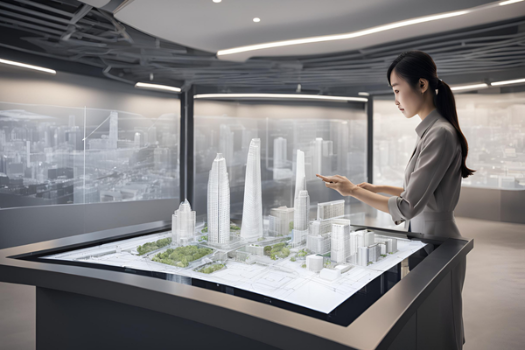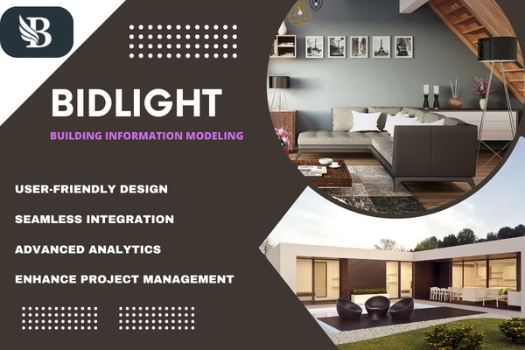.png)
Effortless Building: How BIM Transforms Planning, Design, and Beyond
Introduction
Building Information Modeling (BIM) is revolutionizing the construction industry. It is not just a tool but a transformative approach that brings efficiency, collaboration, and innovation to the forefront. By integrating digital solutions, BIM replaces traditional methods that often lead to miscommunication and delays. It offers construction project management teams centralized information, real-time tracking, and better project planning tools.
This digital transformation in construction is now essential for success. Companies using BIM report improved construction workflows, better resource allocation, and streamlined project documentation. Features like cost estimation and task management ensure projects are completed on time and within budget. These advancements have positioned BIM as a critical driver of construction efficiency and productivity.
In this article, we will explore how BIM reshapes planning, design, and beyond. From scheduling to collaboration tools, discover how it supports construction project management from start to finish.
Understanding BIM: A Digital Revolution in Construction
Building Information Modeling (BIM) is a digital process that integrates design, planning, and construction into a single, unified model. It combines 3D modeling with centralized information to enhance project tracking, collaboration, and decision-making. Unlike traditional methods that rely on fragmented systems, BIM ensures all project data is accessible in one place, enabling teams to work more efficiently and reduce errors. By centralizing construction workflows, BIM supports better resource allocation, construction scheduling, and task management.

The advantages of BIM are backed by results. Projects using BIM achieve cost savings and faster completion times. This is due to its ability to improve construction efficiency, streamline document control, and enhance risk management. As the construction industry adopts digital transformation, BIM continues to stand out as a powerful tool for delivering smarter, more successful projects.
The Role of BIM in Planning and Design
BIM plays a crucial role in improving planning and design processes for construction projects. By using 3D modeling, BIM allows architects, engineers, and contractors to visualize every detail of a project before construction begins. This helps identify potential issues, such as design clashes, early in the process. Clash detection ensures that structural, mechanical, and electrical components fit together seamlessly, reducing costly rework during construction. With centralized information, teams can collaborate in real time, making updates and decisions faster and more accurately.

One standout benefit of BIM is its ability to improve design efficiency. Real-time collaboration and clash detection help resolve potential design conflicts before breaking ground, saving months of delays and additional costs. Professionals often credit BIM for its role in delivering projects on time and within budget. BIM significantly reduces design errors, improves efficiency, and ensures better outcomes for construction teams.
By facilitating detailed planning, accurate modeling, and improved collaboration, BIM transforms how projects are designed. Teams can rely on BIM to optimize resource allocation, track progress, and enhance construction productivity. This makes it an indispensable tool for delivering high-quality designs while minimizing risks and costs.
Beyond Design: BIM in Construction and Facility Management
BIM goes beyond the design phase, transforming how construction and facility management are handled. During construction, BIM serves as a central hub for project tracking, resource allocation, and real-time updates. It improves scheduling by allowing teams to visualize timelines and dependencies, ensuring tasks are completed on time. Cost estimation becomes more accurate, reducing the risk of budget overruns. By keeping all project data centralized, BIM enables seamless communication, minimizes delays, and keeps construction workflows on track.

In facility management, BIM ensures the building operates efficiently throughout its lifecycle. It provides a digital twin of the structure, containing all critical information about systems and components. This helps facility managers plan maintenance, track repairs, and manage assets with precision. For example, a university in Texas used BIM to optimize the maintenance of its campus buildings. By accessing real-time data from the model, they reduced maintenance response times by 25% and improved overall energy efficiency.
Industry experts agree that BIM is reshaping construction and facility management. Reports indicate that projects using BIM achieve a 30% reduction in time spent on rework and experience fewer delays. Facility managers using BIM have also reported a 20% improvement in operational efficiency. These results highlight how BIM supports not just the construction phase but the long-term success of the building itself.
From breaking ground to ongoing maintenance, BIM continues to drive efficiency, reduce costs, and enhance productivity at every stage.
Integrating AI with BIM: The Future of Construction
The integration of Artificial Intelligence (AI) with BIM is unlocking new possibilities for the construction industry. By combining AI's analytical power with BIM's centralized information, construction project management is becoming smarter and more efficient. AI enhances BIM by providing predictive analytics that can forecast risks, optimize schedules, and improve resource allocation. Automated design tools powered by AI also speed up planning processes, allowing teams to focus on creativity and innovation.

This combination is revolutionizing construction workflows. AI-driven BIM models can analyze historical data to predict delays or cost overruns, helping teams make proactive decisions. Such advancements demonstrate how this technology can improve construction productivity and ensure better outcomes.
As AI continues to evolve, its integration with BIM is set to redefine the construction industry. It is not just a trend but the future of smarter, more efficient building practices.
BidLight: Streamlining Project Management with BIM
BidLight is a powerful BIM-based project management solution designed to simplify construction workflows. It provides a centralized platform where teams can manage everything from project milestones to resource allocation. With real-time tracking, task management, and document control, BidLight ensures that all stakeholders stay aligned throughout the project.

One of BidLight’s standout features is its ability to improve construction scheduling and cost estimation. By automating these processes, it eliminates guesswork and reduces the risk of budget overruns. Teams can collaborate efficiently, address issues faster, and maintain compliance in construction. These tools tackle common challenges like miscommunication and delays, boosting overall construction productivity.
BidLight has already proven its value across numerous projects. Users report a significant reduction in administrative work and an increase in project efficiency. With its comprehensive features, BidLight is redefining construction project management.
Conclusion
BIM has revolutionized the construction industry, offering unmatched efficiency, collaboration, and precision. By integrating AI, its potential grows even further, reshaping project planning, design, and management. These tools are no longer optional—they are essential for staying competitive in a rapidly evolving industry.
Adopting BIM and AI technologies ensures streamlined workflows, accurate cost estimation, and improved project outcomes. Embracing these innovations is the key to future success. Take the first step toward transforming your projects today. Explore how BidLight’s comprehensive BIM-based solutions can help you achieve efficiency and excellence in construction project management.